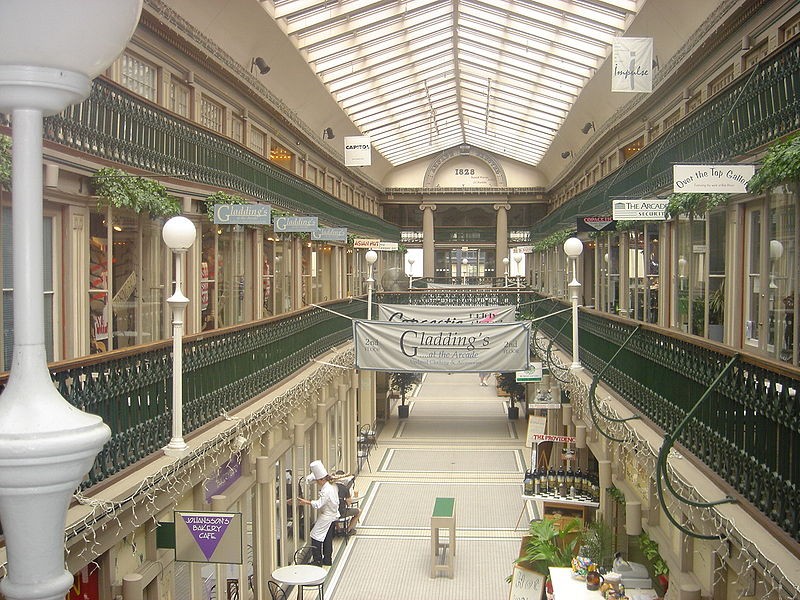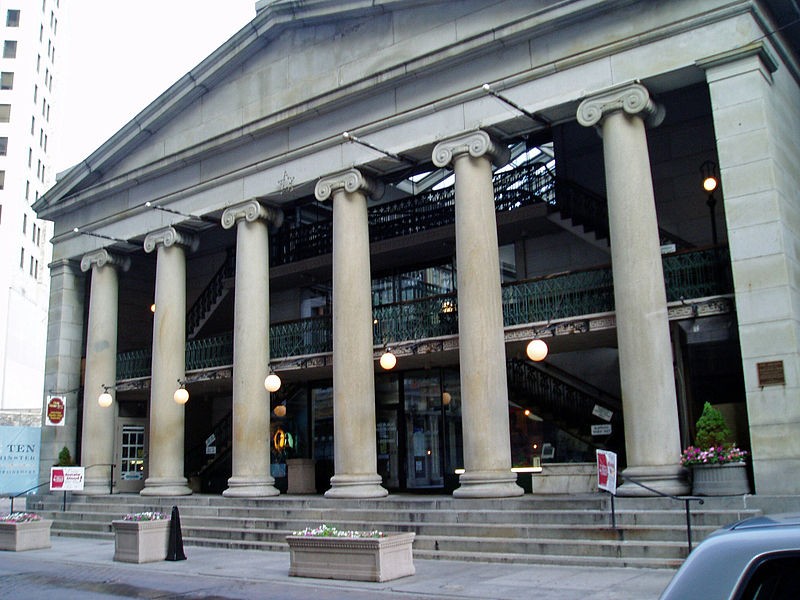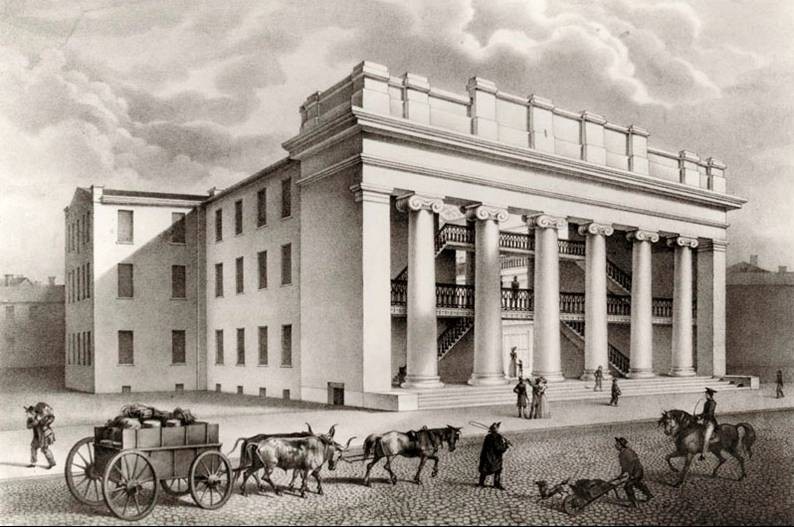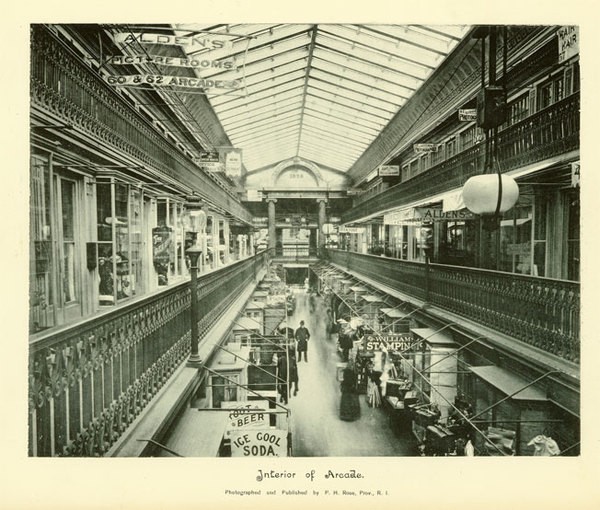Arcade Providence
Introduction
Text-to-speech Audio
Images
Interior of the Arcade (2005)

Front facade of the Arcade Providence

Depiction of the Arcade in its early days

Interior of the Arcade

Backstory and Context
Text-to-speech Audio
History of the Arcade Providence
In 1828, Providence had a population of 14,000 residents, but its markets and commercial district were growing substantially and the urban core served a much larger market that the city's relatively small population might otherwise suggest. In an attempt to better promote the commercial development of downtown Providence, Cyrus Butler worked to build a single urban market with a multitude of connected shops. Owing to the harsh New England weather, Butler's envisioned this as an enclosed space that would make shopping a pleasurable experience throughout the year.
Architects Russell Warren and Tallman & Bucklin designed the building for Butler’s venture, calling for three floors of arcaded lanes of shops and a skylight providing illumination, similar to many structures in European cities. The 216-foot Arcade building was finished in 1828, constructed entirely out of granite, and it featured twelve massive 21-foot granite columnns (the largest monolithic columnns in the country at the time). The total cost of the building was around $145,000 (approximately equivalent to around $30 million in 2015). After opening, the Arcade grew in its popularity, though garnering a profit was exceedingly difficult. Moreover, the Arcade Providence held widespread renown for its architecture; in fact, the Metropolitan Museum of Art once called it one of the finest commercial buildings in the history of American architecture.1
